Sophia Simpson
Narrative written by Ann de Forest
Photos by Dave Tavani
Sophia Simpson’s apartment is in temporary disarray. Management at her Center Post Village complex has scheduled carpet cleaning, so Sophia has pushed tables and chairs into a corner and stacked cardboard boxes in the kitchen. To the first-time visitor, it looks like Sophia just moved in – or maybe is getting ready to move out.
But Sophia, 50, isn’t planning to go anywhere anytime soon. She has lived in her one bedroom apartment on 40th Street – steps away from the Market-Frankford subway stop, right next door to Presbyterian Hospital, in the nexus between Drexel University and Penn – for seven years.
Of all the places she has lived, North, Southwest, suburban Elkins Park, and even San Diego, California, she likes this location best. “This area here I’m in now,” says Sophia. “I love it to death. I don’t know if it’s because of the college kids, but it’s more secure and secluded. It’s a safe environment.”
Sophia got the call that an apartment in Center Post Village was available three years after she had submitted an aplication. She was living back with her mother, in her childhood home on Hutchinson Street in North Philadelphia. She had her name on waiting lists for housing all over the city, and barely remembered having applied for the West Philadelphia complex. The call came as a pleasant surprise.
Once she moved in, the neighborhood surrounding Center Post Village surprised her too. “I thought it was going to be more ghetto …Is that a word?” she asks. “More like city-ish,” she elaborates. “More street.” Just a block from the busy Market Street corridor, the complex of low-rise brick clusters surrounded by trimmed lawns is an oasis of tranquility.
Her previous experience in the western part of the city had been unsettling. She lived in Bartram’s Village, one of the oldest PHA complexes in the city, which despite its park-like setting in a shady glade of tall trees, has a tough reputation. “I didn’t really see any violence,” she says. But she worked late shifts as a CNA at a nursing home in Jenkintown, and often felt wary coming home late at night. One night, she pulled into her parking space after work and noticed a guy sleeping in the car right next to her. Or so she thought. It was her neighbor. Someone had killed him. “He was in the car dead, with money in his hand.”
So she went home to the neighborhood where she grew up, to the two-story, three-bedroom row house on Hutchinson Street she fondly refers to by the numbers of its address, 2619. Sophia has wistful memories of her childhood in the heart of North Philadelphia, at Germantown and Lehigh, back when Germantown Avenue was known simply as The Avenue, bustling with shops, neighbors hanging out on stoops, the brownstone rows overflowing with children, including her nine sisters and one brother. Her father, genial and generous, was known as The Mayor. He ran a hot dog stand and a record shop, and lived for Christmas. “We always had the biggest tree. He had to cut the top off so he could put the star up there.”
Her father always made sure that every one of his 11 children had a present to open on Christmas morning, and grandchildren too once they arrived. When Sophia was little, she figured her Pop Pop was rich. Later she discovered he started saving up the day after Christmas to buy his children presents. He never spent money on himself. “We were never deprived of anything. Especially food, as you can tell,” Sophia pats her stomach and laughs. “We did have a fun, fun, fun life growing up.”
Her mother still lives in the same house, looked after by Sophia’s brother and one of her sisters. Now four generations pack the small house on Christmas, birthdays, and other festive occasions. Sophia still feels the ache of her father’s absence, ten years after his passing. “I miss him like crazy. At first it was so hard going to 2619 and not see him playing his solitaire.”
The lively Avenue of Sophia’s youth has disappeared too. “Germantown and Lehigh was once a good area,” she says. “It’s not the same. They have 20 million dollar stores and discount stores. It’s nothing like when I grew up… . I used to love the Avenue. Now all the stores are gone. Half of them burned up.”
Sophia’s new neighborhood, though, is thriving. Sophia loves late night jaunts to the Fresh Grocer, open 24 hours, and the abundant dining options, from Chinese food trucks to high-end gourmet. The college students, whose drunken antics on the weekends strike Sophia as more amusing than annoying, help make the neighborhood safer, she says. Penn and Drexel security keep careful watch on the surrounding blocks. If Sophia has any complaint, it’s that the neighborhood can be too quiet, especially late at night. “Everybody goes to bed. Nobody sits on the stoop.” Sophia and her daughter and grandsons, who live in the same complex, often stay up all night talking and having fun. If she gets a hankering for Chinese food, “You have to walk all the way up to Lancaster Avenue to find anything that’s open.” The Fresh Grocer and McDonald’s on Walnut Street have become her late night havens.
She is so enamored of University City and all it has to offer in the way of food, shopping, and entertainment, that her family teases her for putting on airs. “My niece and them they call me bougie now,” she laughs. “They say ‘You live in West Philadelphia,’ and I say, ‘Please,” — her voice shifts to a queenly register — “’It’s University City.’”
The boundaries of University City are expanding. She can see that the West Powelton neighborhood north of Market and west of 38th Street is changing fast. Around the corner and up the street, 150-year-old rowhouses are being demolished at an astounding rate, quickly replaced by multi-story apartment buildings. “They put up all these new houses up the street and they look nice,” says Sophia. “And we all know they’re for the college kids. I guess they’ll let ‘civilians’ move there too.”
While she knows many long-time residents object to all the changes, Sophia applauds the transformation. “I think it’s positive… They need to make the neighborhood livable. They’re building up the community and not tearing it down. Who wants to live in a neighborhood with abandoned buildings?”
“I feel like it’s a real nice neighborhood,” she adds. “Friendly. Neighborly. But you keep to yourself.” Which is what she prefers. Aside, from her daughter and two grandsons (with another baby on the way in November), who also live in the complex, Sophia doesn’t socialize much with the other residents. “I try to keep a low profile,” she says. “I speak to everybody, and basically know everybody by sight.”
She keeps a protective eye out on her oldest and frailest neighbors. Back in the 1970s, Center Post Village was built, she says, as housing for the elderly. While its original mission has changed, some of the original tenants are still around. There’s a 91 year-old-neighbor she particularly loves, who always dresses up to go shopping and is resolutely independent. Sophia has affectionately nicknamed her Mrs. Doubtfire for her indomitable spirit.
While Sophia feels settled and content in her University City haven, home for her is still and always “2619.” She laughs recounting how crowded the tiny row house gets. “We be all piled up there. We don’t care where we sit. If someone up gets, up they lose their seat.” The family keeps growing and growing, but still stays tightly knit, cousins bonding with each other across the generations. The laughter and good times continue. Their memories sustain them.

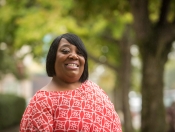
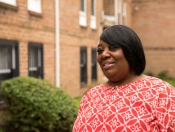

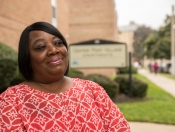
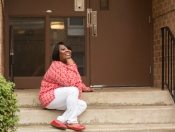
 Emi and Afaq Mahmoud
Emi and Afaq Mahmoud 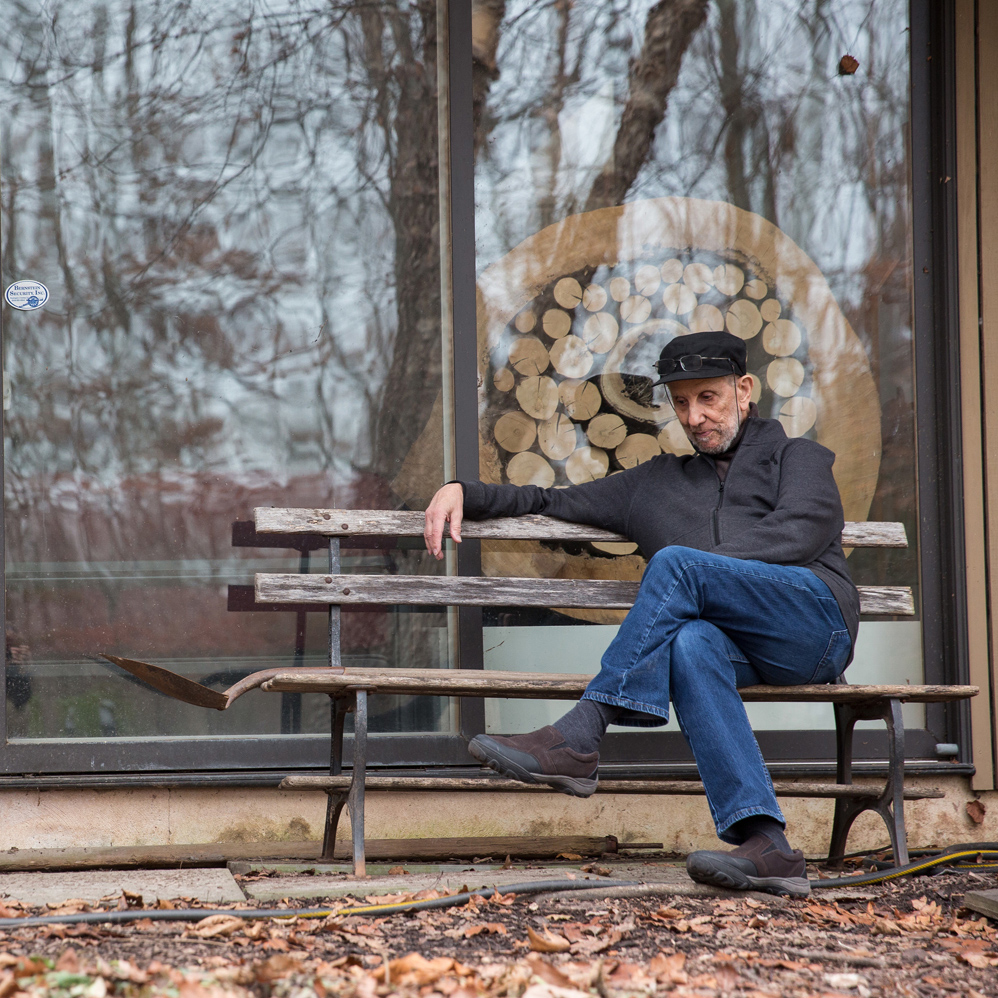 Rajie Cook
Rajie Cook 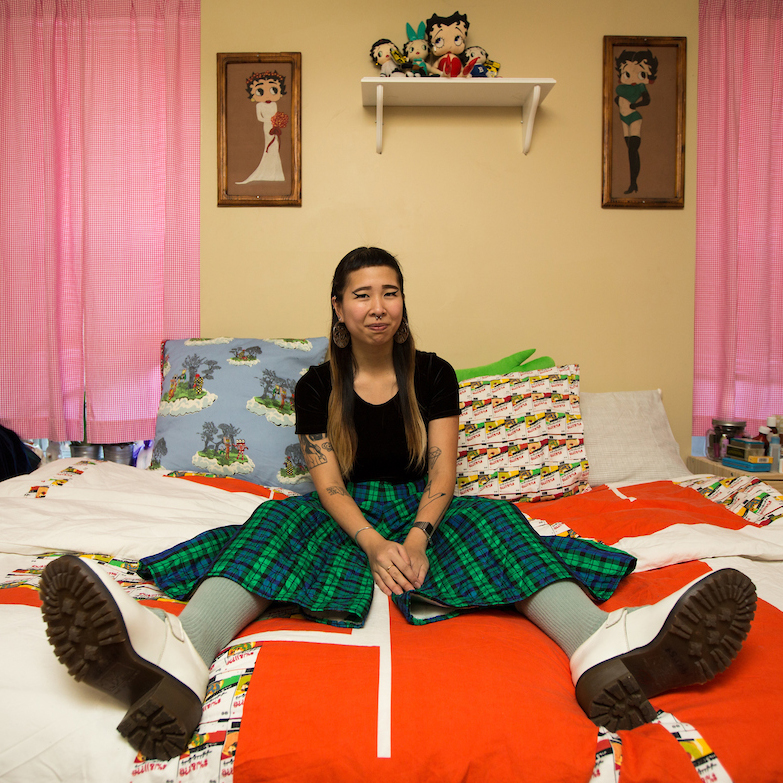 Cocoa Mahoney
Cocoa Mahoney 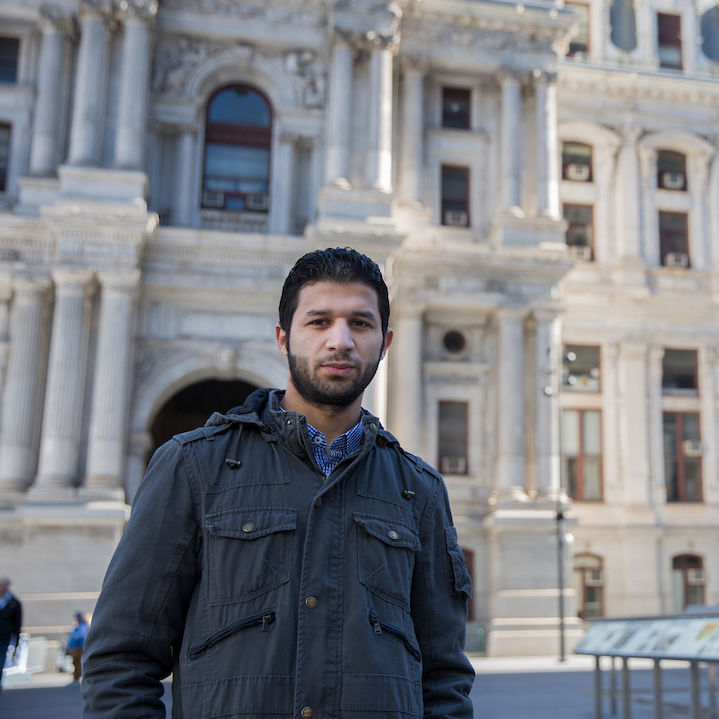 Yasser Allaham
Yasser Allaham 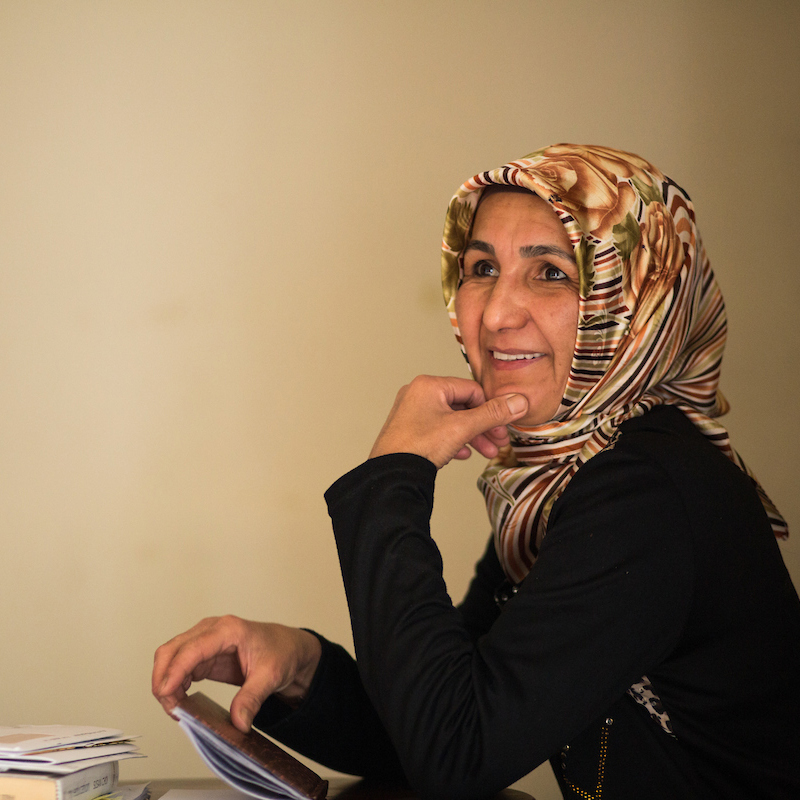 Gulnora Ravshan
Gulnora Ravshan  “Floating Outsider”
“Floating Outsider” 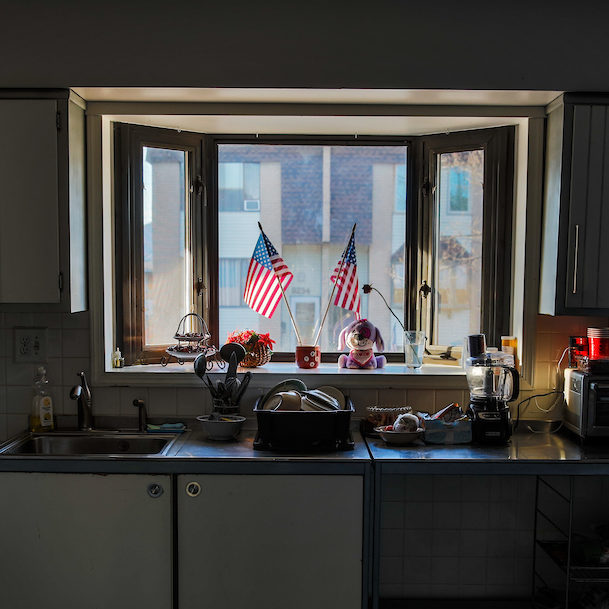 “Ahmad” & “Zainab”
“Ahmad” & “Zainab” 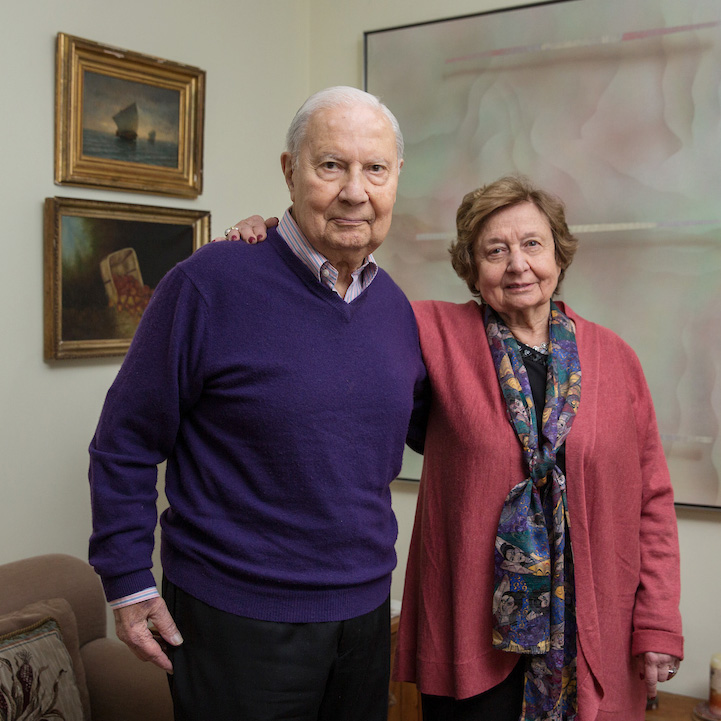 Jack and Gloris Dunnous
Jack and Gloris Dunnous  Maria Turcios
Maria Turcios 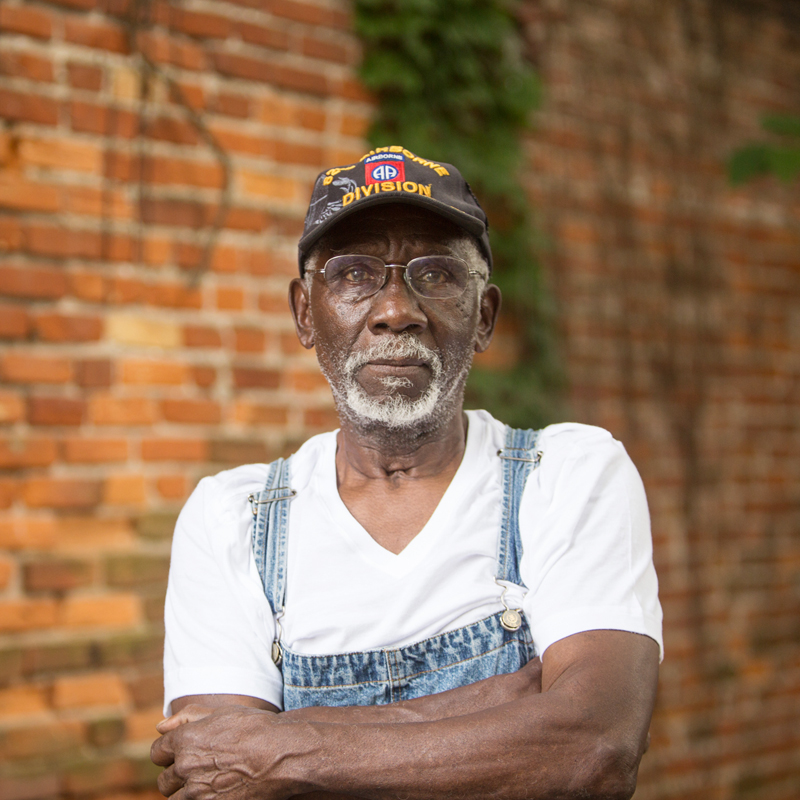 Lafayette El
Lafayette El 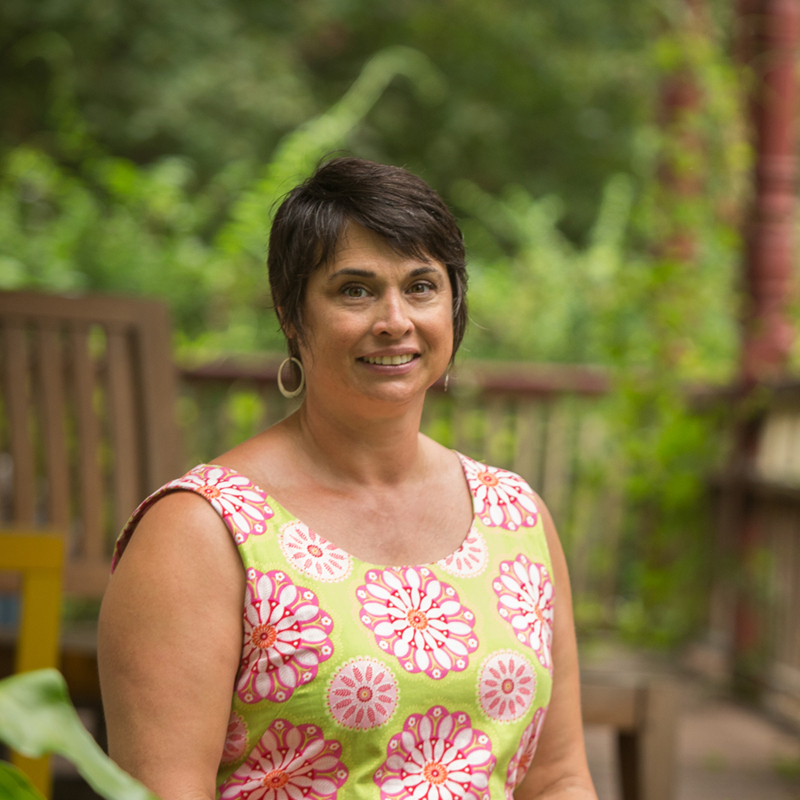 Tara O’Brien
Tara O’Brien